AI translation tools have become critical for translators managing large workloads and tight deadlines. With global business expansion, these tools help handle vast amounts of content while maintaining quality. However, not all tools offer the same capabilities. Here's what you need to know:
- Numerous: Acts as a connector to other engines like DeepL or Google Translate, offering flexibility in language support and integration through APIs.
- DeepL: Known for high accuracy in European languages, integrates with platforms like Microsoft 365, but supports fewer languages.
- Smartling: Offers advanced workflow tools, pre-built integrations, and real-time tracking, ideal for large-scale projects.
- Google Translate: Covers 130+ languages, but accuracy varies. Best for casual use or non-critical content.
- Microsoft Bing Translator: Reliable for common language pairs, integrates well with Microsoft products, and supports custom models for specialized needs.
- ChatGPT: Handles context-aware translations and mixed-language input. Customizable but requires manual checks for critical tasks.
Quick Comparison
| Tool | Strengths | Limitations | Pricing |
|---|---|---|---|
| Numerous | Flexible engine integration | Limited advanced features | Varies by API |
| DeepL | High accuracy for European languages | Fewer supported languages | Subscription |
| Smartling | Advanced workflows, real-time tracking | Expensive for smaller teams | Enterprise-tier |
| Google Translate | Wide language coverage, free tier | Limited accuracy for nuanced content | Free/Paid API |
| Bing Translator | Custom models, Microsoft integration | Limited advanced features | Pay-per-use |
| ChatGPT | Context-aware, customizable | Costly for high-volume use | $20/month+ |
Each tool suits different needs. For casual translations, Google Translate works well. For accuracy, DeepL is better. Smartling is ideal for complex workflows, while ChatGPT offers flexibility for mixed-language tasks. Choose based on your workflow, language requirements, and budget.
Top 5 machine (AI) translation software you should try | Accuracy comparison & use cases
1. Numerous
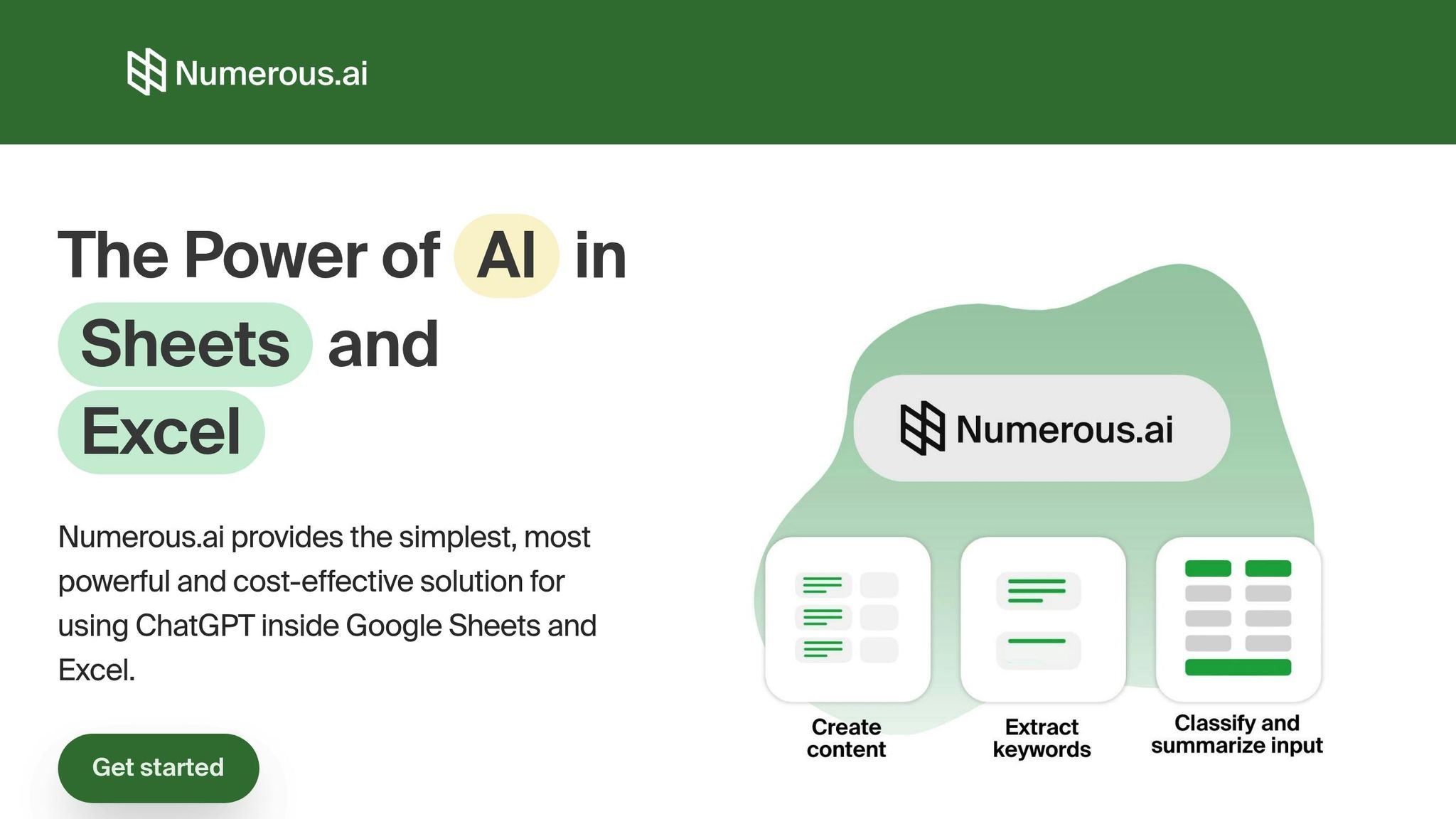
Numerous isn’t a translator on its own - it’s more like a connector. It links users to established translation engines through APIs, serving as a bridge rather than providing its own translation capabilities.
Language Support
The range of languages Numerous supports depends entirely on the translation engine it’s connected to.
For example, when paired with DeepL, users can access translations in about 30 languages. On the other hand, connecting to Google Translate unlocks support for over 100 languages. This flexibility lets you customize language coverage to suit your specific project needs. Whether you’re aiming for pinpoint accuracy or broader language options, Numerous adapts to meet those demands.
Integration Options
One of Numerous’s standout features is its ability to integrate multiple translation engines through APIs. This approach makes it easy to embed translation tools directly into your existing workflows. For translation agencies or freelancers juggling diverse client requirements, this seamless integration is a game-changer.
Moreover, if your organization uses proprietary translation software, Numerous can be configured to work with those custom engines as well. Its integration framework is designed to create tailored workflows that align with unique business needs.
Customization
Customization is where Numerous truly shines. It gives you the ability to choose the best translation engine for each language pair or project. For instance, you might opt to use DeepL for European languages where precision is key, while relying on Google Translate for projects requiring a wider range of language support. This level of control ensures you can fine-tune your translation process to achieve the best possible results.
2. DeepL
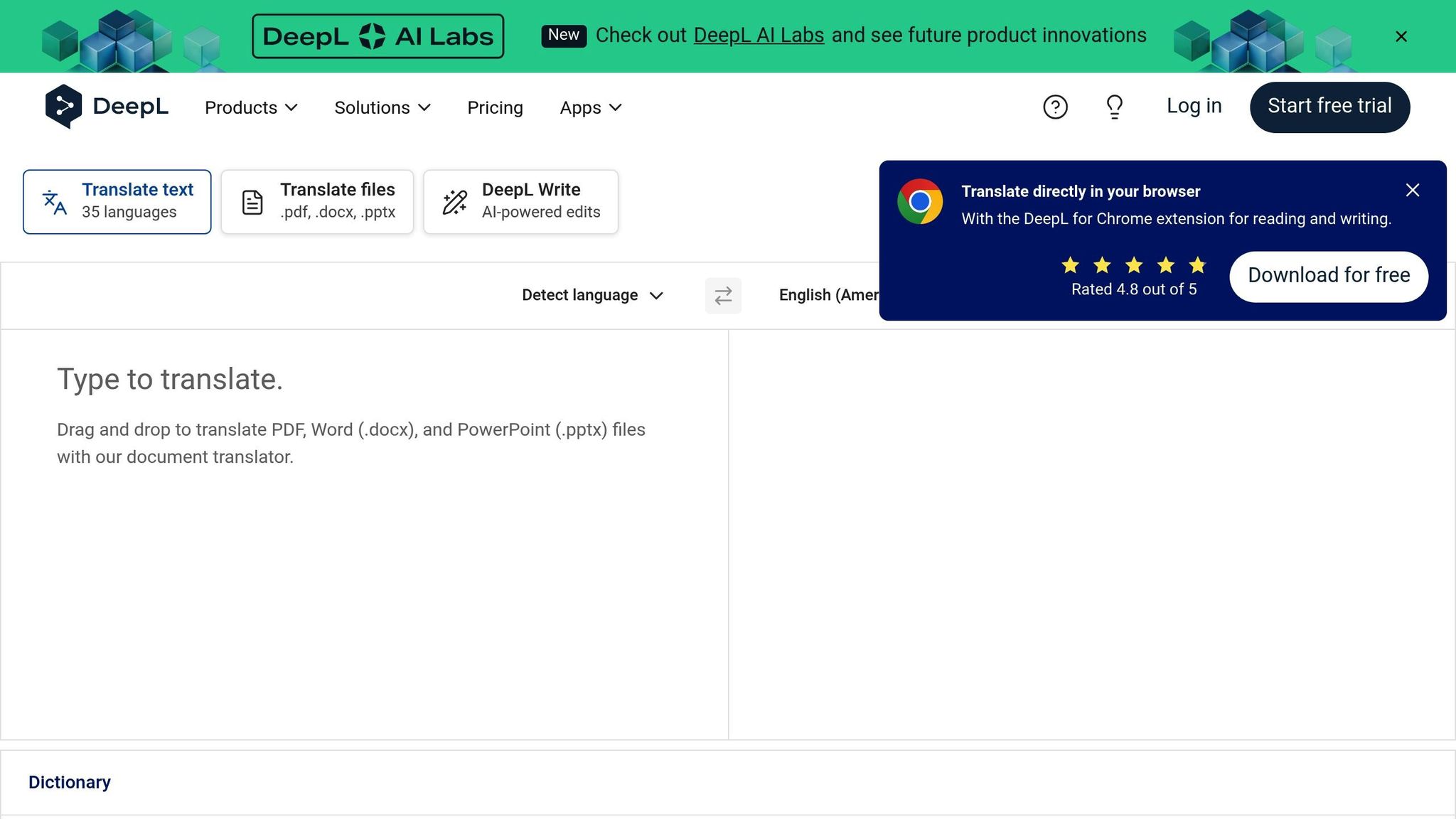
Integration Options
DeepL works seamlessly with platforms such as Microsoft 365, Google, and Zendesk. It also enhances enterprise workflows through specialized Language AI integrations. These features make DeepL a strong choice for both independent translators and large-scale businesses.
3. Smartling
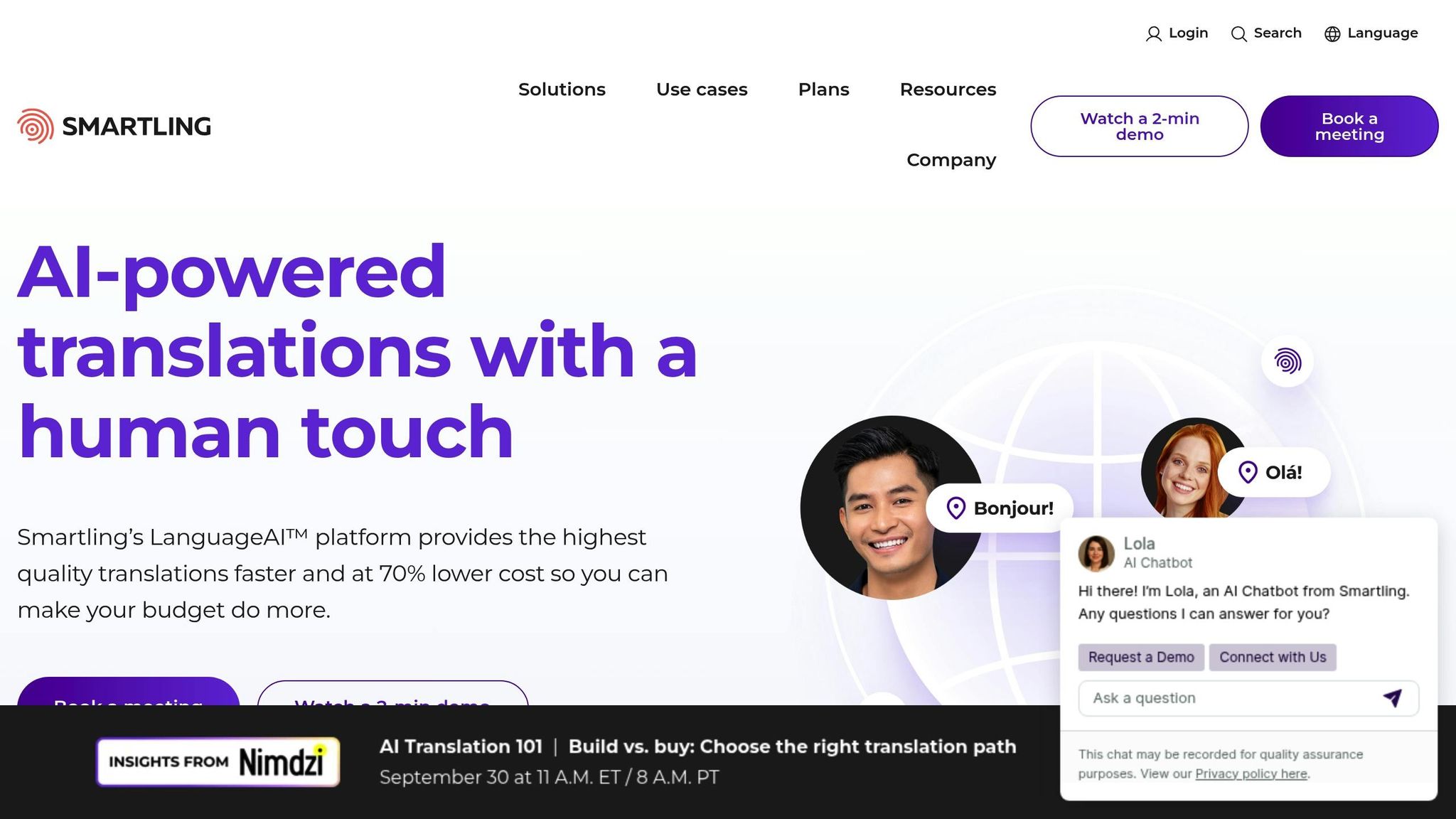
Smartling stands out with its impressive range of features, offering a blend of integrations, language support, and customization options tailored for translation workflows.
Language Support
Smartling supports a vast array of languages and locales, allowing for unlimited language pair combinations.
One of its standout features is the Machine Translation Hub, which integrates top translation engines like Google Translate and DeepL. This hub intelligently selects the best engine for your content based on its type and language pair. However, it’s worth noting that Smartling's AI Translation (AIT) workflow is limited to language pairs where English serves as the source language.
Integration Options
Smartling provides over 50 pre-built connectors for popular platforms such as Drupal, Adobe Experience Manager, and Contentful. Additionally, it offers robust API access, SDKs, and Zapier support, making it easy to embed translation workflows into your existing systems.
For development teams, Smartling supports direct integration into CI/CD pipelines, ensuring that translation processes are seamlessly incorporated into continuous deployment cycles. Another standout feature is the Global Delivery Network (GDN) translation proxy, which enables websites to be translated in real time - without requiring any code changes. These diverse integration options make Smartling a versatile solution for modern translation needs.
Customization
Smartling is designed for continuous localization, featuring automated workflows and real-time progress tracking. The real-time tracking tools allow project managers to monitor progress across multiple languages effortlessly. This focus on automation and flexibility reflects the growing demand for integrated translation solutions in the industry.
4. Google Translate
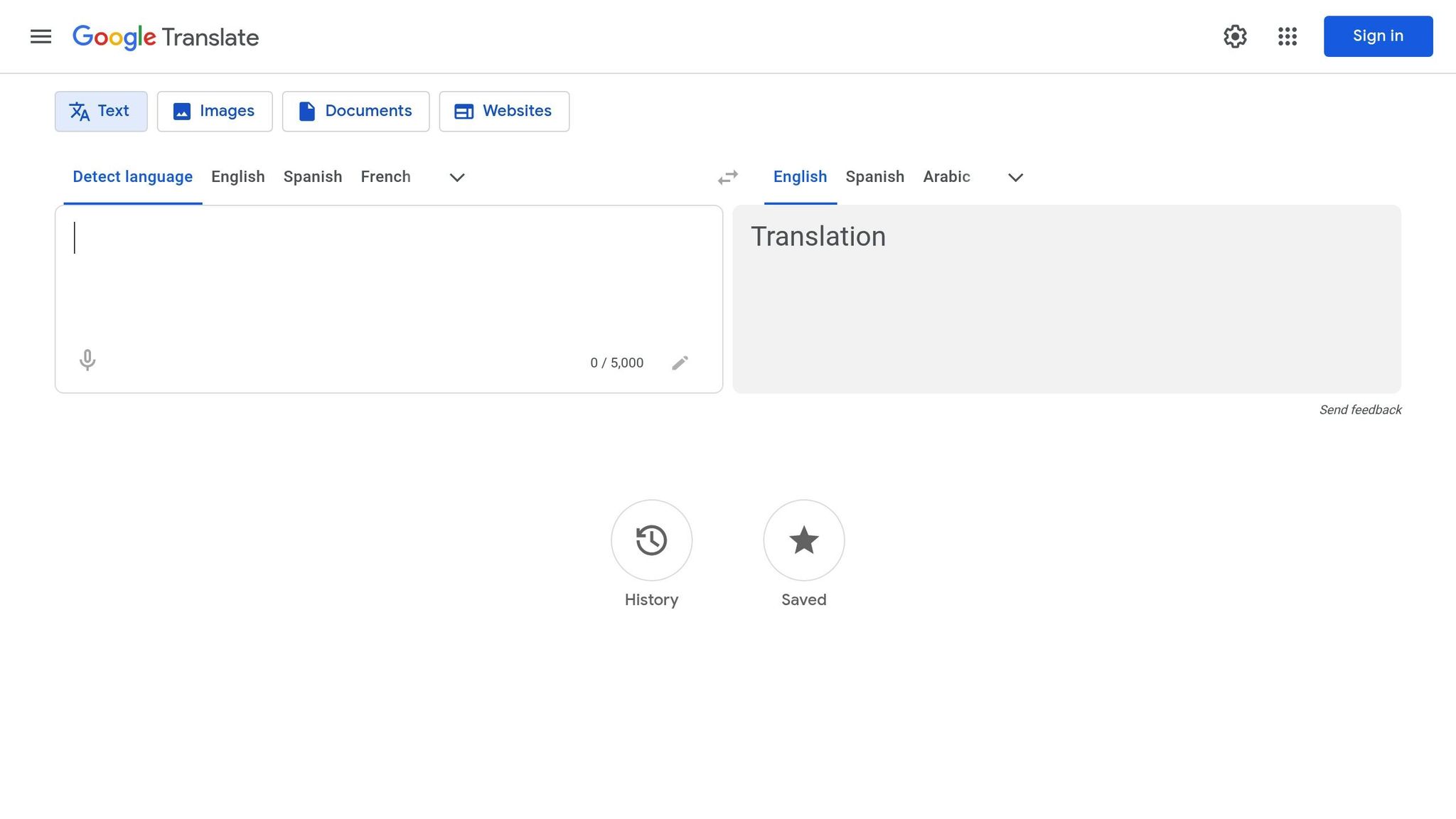
Google Translate is one of the most widely recognized AI-driven translation tools, especially since it adopted Neural Machine Translation back in 2016. Its ability to handle a variety of languages has made it a go-to option for many users, but its performance depends on several factors.
Translation Accuracy
The tool's accuracy largely depends on the language pair and the complexity of the text being translated. For widely used language pairs like English-Spanish or English-French, it tends to deliver solid results. However, it often falls short when dealing with nuanced contexts or subtle cultural references. For critical content - like legal documents, medical texts, or creative writing - human post-editing is essential to ensure precision and clarity.
sbb-itb-212c9ea
5. Microsoft Bing Translator
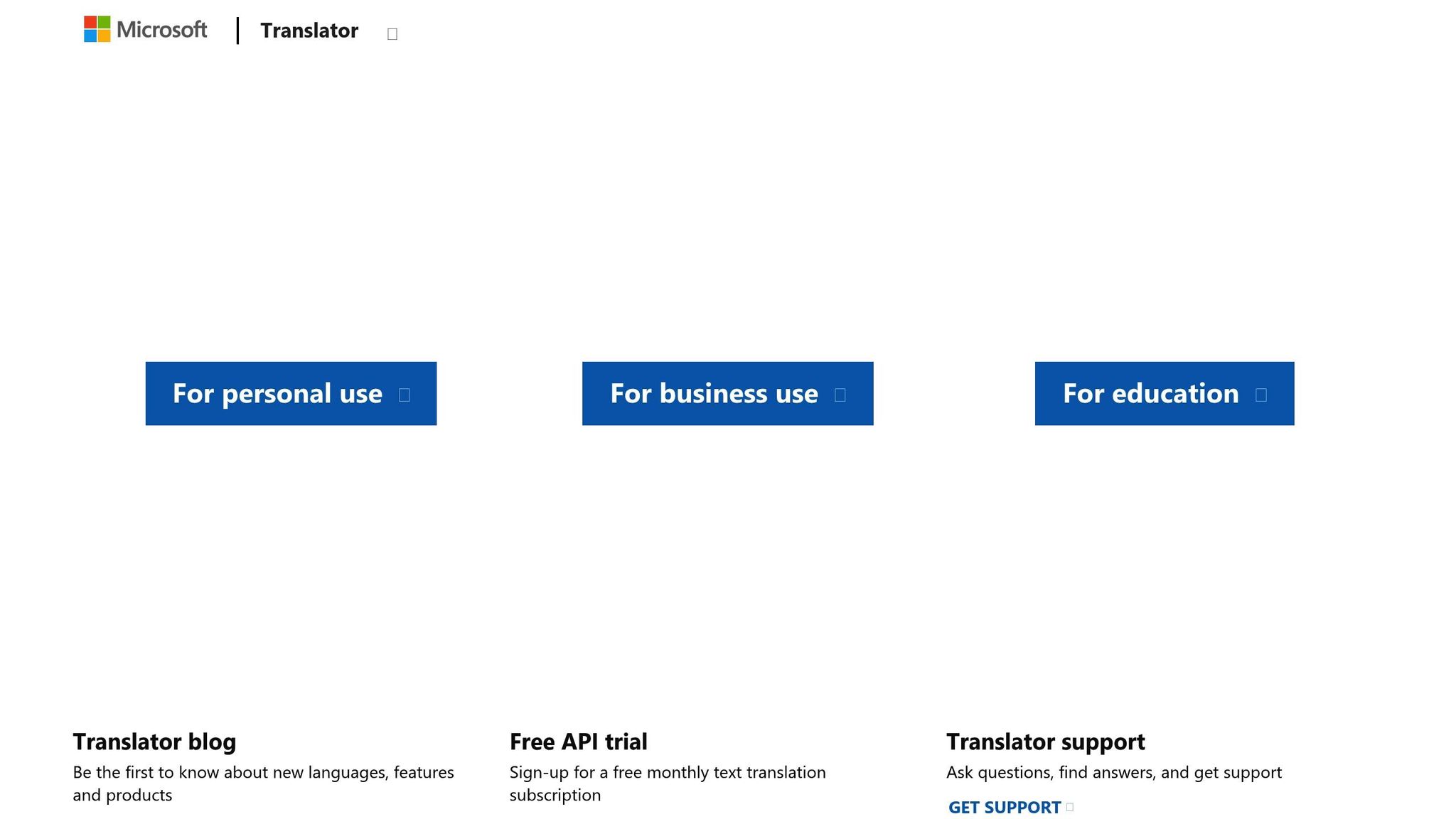
Microsoft Bing Translator made a significant shift in November 2016, moving from statistical methods to Neural Machine Translation (NMT). This upgrade improved the quality of translations for everyday use.
Language Support
Bing Translator performs well with widely spoken languages that have abundant digital content. It shows strong results when translating between languages like English, Spanish, French, and German. However, for languages with fewer digital resources or more intricate grammar structures, its accuracy tends to drop. This creates a range of translation precision depending on the language pair.
Translation Accuracy
According to Microsoft, Bing Translator achieves an accuracy rate of 80–90% for common language pairs. That said, its performance can vary based on the complexity of the language and the amount of training data available. While it’s reliable for casual communication, it sometimes struggles with idioms, cultural references, and meanings that depend heavily on context. For critical tasks like translating business contracts, legal documents, or medical texts, human translators remain the safer choice.
Customization
Bing Translator also offers a Custom Translator feature, allowing organizations to create specialized translation models. By training the system with industry-specific documents and terminology, users can improve accuracy for technical terms and niche expressions. This ability to tailor translations to specific needs adds an extra layer of utility, making Bing Translator a standout option among AI translation tools.
6. ChatGPT
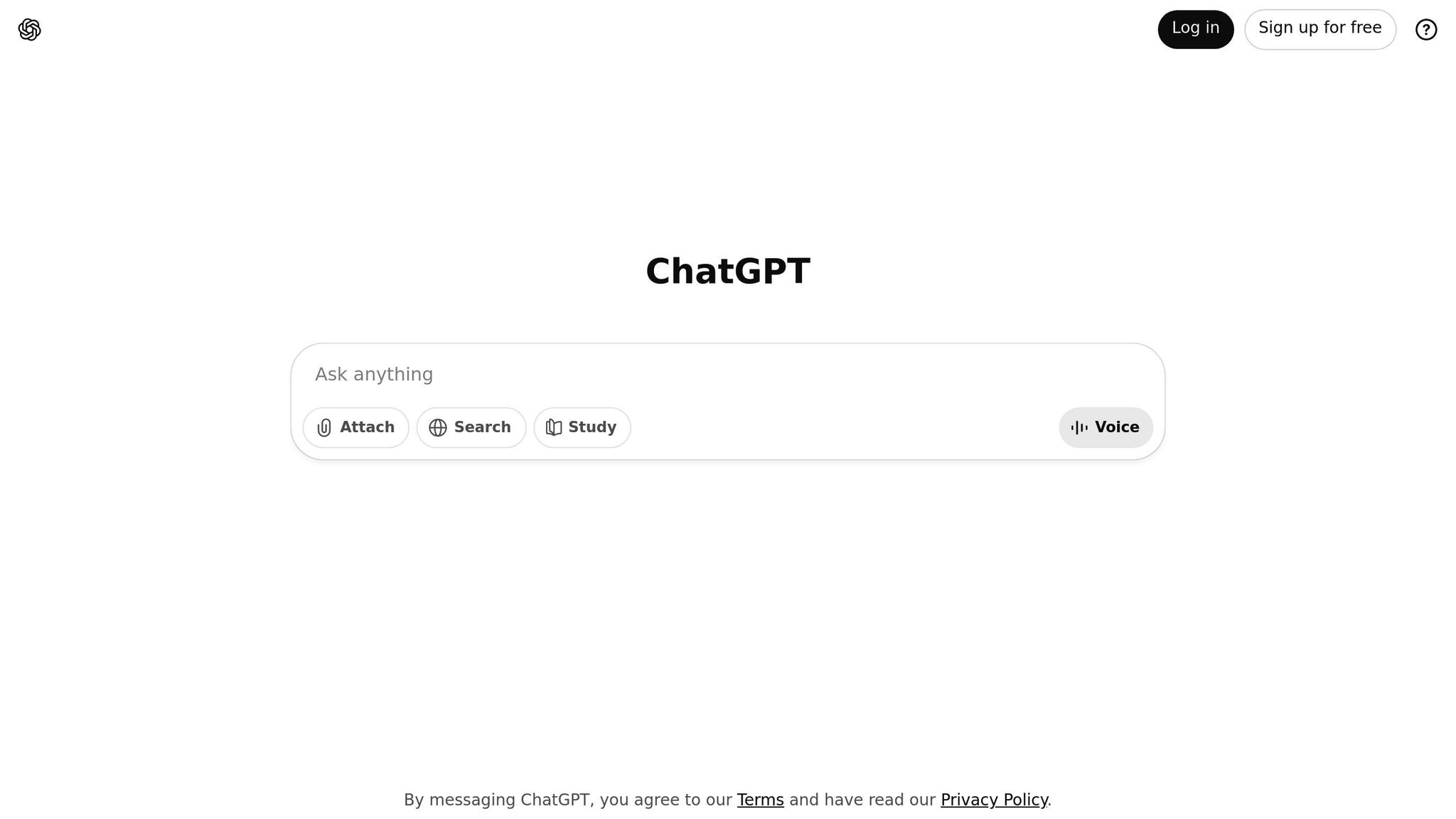
ChatGPT was initially designed as a conversational AI, not a dedicated translation tool. However, its ability to understand context has made it a versatile option for translation tasks.
Language Support
ChatGPT supports translations across many languages, performing well with widely spoken ones like English, Spanish, French, German, Chinese, and Japanese. That said, its accuracy can vary, especially when dealing with less common languages or regional dialects that are underrepresented in its training data.
Unlike traditional translation tools, ChatGPT can handle code-switching, where multiple languages are mixed in a single request. This makes it particularly helpful for translators working with multilingual content or clients who frequently switch between languages. This adaptability adds an edge to its translation capabilities.
Translation Accuracy
The accuracy of ChatGPT's translations often depends on the complexity of the text and the context provided. For straightforward content, it offers smooth and natural translations. However, it may stumble with highly technical, legal, or specialized jargon unless given additional context. For critical or professional material, a human review is recommended.
Another limitation is its training data cutoff, which means it might not recognize newer terms or evolving language trends.
Integration Options
ChatGPT’s integration options make it easy to incorporate into existing workflows. Through OpenAI's API, translators can use its translation features within their tools. Many translation management systems now offer ChatGPT integration, enabling batch processing for large-scale projects. However, high-volume usage can lead to significant costs.
Additionally, third-party plugins and browser extensions have expanded its accessibility. These tools let users highlight text and receive instant translations without switching between applications.
Customization
One key advantage of ChatGPT is its ability to follow detailed instructions. Users can specify translation style, formality, target audience, or even ask for explanations behind certain word choices. This level of customization is rare among traditional translation tools.
ChatGPT also adapts within a session, improving results based on user feedback. However, these settings reset with each new session, requiring reconfiguration.
Pricing Models
ChatGPT offers a subscription-based model for individual users. The ChatGPT Plus plan costs $20.00 per month, providing faster responses and more reliable access. For API usage, costs are calculated per token and vary based on the model version used.
Advantages and Disadvantages
Each translation tool comes with its own set of strengths and weaknesses. Understanding these trade-offs is key to selecting the right solution for your needs.
Here’s a quick comparison of the pros and cons of popular tools:
| Tool | Advantages | Disadvantages |
|---|---|---|
| Numerous | Processes batches quickly, affordable for large-scale projects, easy to integrate | Limited language options, struggles with complex content, lacks advanced customization |
| DeepL | Highly accurate for European languages, produces natural translations, understands context well | Fewer supported languages, higher cost for premium features, restricted API capabilities |
| Smartling | Excellent workflow management, strong team collaboration tools, thorough quality assurance | Expensive for smaller teams, steep learning curve, overkill for simple tasks |
| Google Translate | Covers 130+ languages, free tier available, delivers instant results, strong mobile app | Quality varies across language pairs, potential privacy issues with sensitive data, limited customization options |
| Microsoft Bing Translator | Integrates well with Microsoft products, competitive accuracy, reasonably priced | Lacks advanced features, fewer workflow tools, smaller language library compared to Google |
| ChatGPT | Highly customizable with prompts, handles mixed-language input, explains context effectively | Accuracy can be inconsistent, lacks translation memory, requires manual checks, costs can add up quickly |
These comparisons build on the detailed feature breakdowns covered earlier, highlighting key differences.
When weighing cost, integration, and customization, each tool takes a unique approach. For instance, Google Translate offers a robust free tier, making it an attractive option for casual users. Smartling, on the other hand, is designed for enterprises with complex needs, while DeepL strikes a balance, delivering high-quality translations at moderate costs for professional users.
For specialized projects, it’s worth revisiting the strengths of each tool. For instance, DeepL excels in accuracy for European languages, while Smartling shines in team collaboration for large-scale workflows.
The learning curve also varies. Google Translate is user-friendly and requires no setup, making it perfect for occasional use. Smartling, while powerful, demands training and is better suited for teams that can invest time in mastering its features. ChatGPT offers a middle ground, combining advanced customization for experienced users with accessibility for beginners.
Finally, data privacy is a critical factor. Tools like Smartling come with enterprise-grade security, making them a safer choice for sensitive content. Free options like Google Translate may not meet strict confidentiality standards, so they’re less ideal for business-critical or private material.
Final Thoughts
Choosing the right AI translation tool comes down to your specific needs, workflow, and budget. For quick and casual translations, Google Translate is a reliable go-to with its wide language coverage and free access. If you’re looking for higher accuracy - particularly with European languages - DeepL is a strong contender, though it comes with a subscription cost. For businesses managing complex translation projects, Smartling stands out with its advanced workflow management and security features. Meanwhile, ChatGPT offers flexible, context-aware translations, and Microsoft Bing Translator integrates seamlessly into Microsoft-based environments. If high-volume batch processing is your priority, Numerous might be the best fit.
To ensure a smooth implementation, start by auditing your workflows and piloting the tool. Test its integration, gather feedback, and monitor its performance over time. This step-by-step approach helps you fine-tune the process without causing major disruptions. Throughout this, prioritize data privacy and security. Make sure the tool you choose complies with regulations like GDPR and uses strong encryption to protect sensitive information.
AI translation tools are best viewed as assistants, complementing human expertise. While machine translation offers speed, combining AI with human input delivers the nuanced accuracy needed to reflect brand voice and intent effectively [32,33].
As the translation industry continues to evolve, leveraging the right AI solution can significantly enhance both productivity and quality. Evaluate your options carefully, test them thoroughly, and roll them out gradually to ensure lasting success.
FAQs
What should I consider when selecting an AI translation tool that fits my needs and budget?
When selecting an AI translation tool, it's important to zero in on the features that align with your needs. Start by looking at language support - does the tool cover the languages you require? Next, assess translation accuracy to ensure it delivers reliable results. Also, think about how easily it can integrate with your current workflows, as seamless integration can save time and effort.
Pricing is another factor to weigh. Some tools charge based on the number of words translated, while others operate on a subscription basis. Subscription plans can vary widely, from a few dollars a month to higher-tier options designed for enterprise use.
To make a well-informed decision, put the tool to the test with real-world examples from your industry or typical content. This hands-on approach will help you determine if it meets your quality standards and delivers value for the cost. Be mindful of your budget, but prioritize the features that are most critical to your needs.
How do DeepL and Google Translate compare in terms of language support and translation accuracy?
DeepL supports approximately 30 languages and is widely praised for delivering precise and natural-sounding translations, especially for European languages. Its ability to handle complex sentences and idiomatic expressions often surpasses Google Translate, making it a dependable option for professional or nuanced translation needs.
Google Translate, meanwhile, covers a much broader range of languages, supporting over 100. It’s faster and more versatile for general purposes, but its accuracy can vary, particularly with less common languages or more intricate contexts. For professional use, its translations might need some manual adjustments to meet higher standards.
DeepL shines when it comes to accuracy and fluency in its supported languages, while Google Translate is the go-to option for its extensive language coverage and speed.
How can I protect sensitive data when using AI translation tools?
To keep your sensitive data safe when using AI translation tools, start by checking if the platform uses secure protocols like HTTPS and TLS. It’s also a good idea to select tools with strong data security certifications and a clear focus on protecting user privacy. Before uploading content for translation, think about removing or masking any personally identifiable information (PII) to reduce potential risks.
For added protection, opt for providers that use end-to-end encryption and stay on top of their security practices with regular updates. Performing periodic security audits can also help uncover weaknesses and ensure your data stays secure throughout the translation process.



